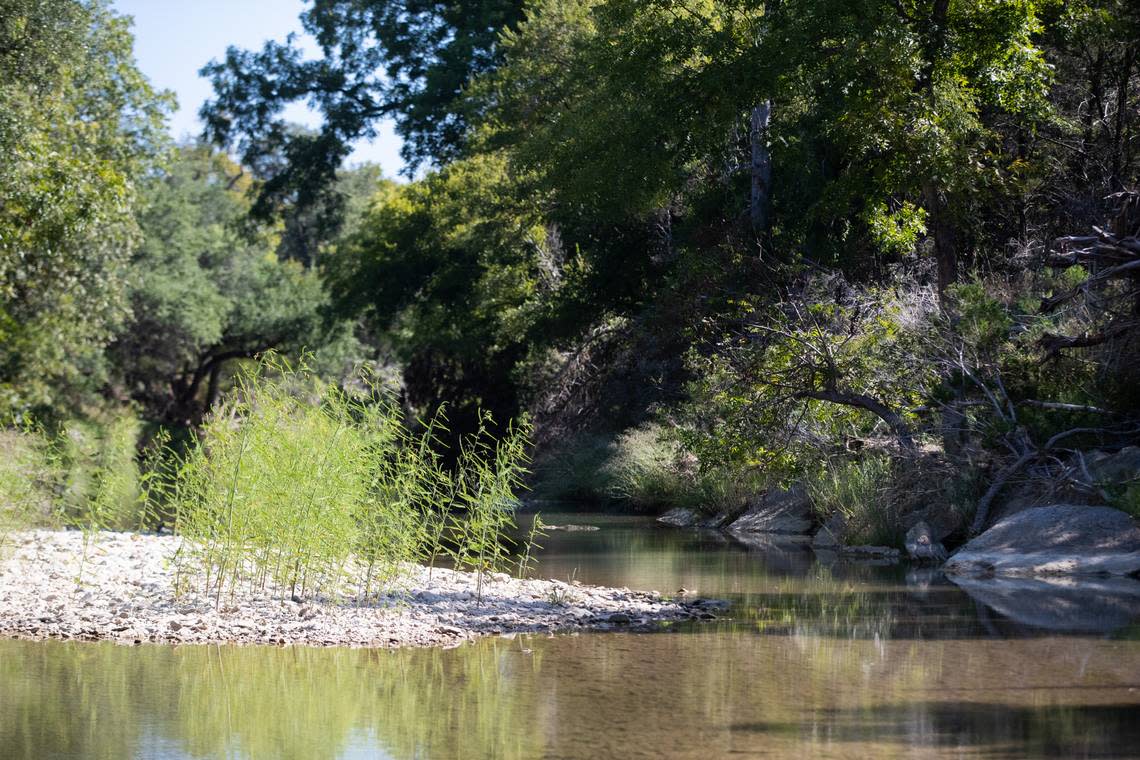Texas needs more state parks for recreation — and soon, before growth eats more scenic land
A century ago, at the end of a day of travel, Texans would just find a spot along the road and set up camp. This tradition worked fine, until the advent of the automobile led more and more Texans to motor around, crowding up and dirtying and crowd up and dirty roadsides.
In 1923, Gov. Pat Neff convinced the Legislature to establish the State Parks Board, seeking to build formal parks and campgrounds where he hoped Texans “might go and forget the anxiety and strife and vexation of life’s daily grind.” Presciently, Neff also noted that Texas’ “primeval and picturesque places of native charm and characteristic beauty are rapidly disappearing” and needed to be preserved.
Almost 100 years later, Texas now boasts an incredible system of state parks that protect some of our state’s most beautiful places. Every year, millions of Texans visit our parks to get away from it all by camping, hiking, fishing, hunting and spending time with their families and friends in the great outdoors.
Our state parks, from Mineral Wells State Park to Big Bend Ranch, also protect critical wildlife habitat and drinking water sources and boost a thriving outdoor recreation industry.
Unfortunately, as the state rapidly grows, our parks system is bursting at the seams and struggling to meet public demand for recreational opportunities. A new report by the Environment Texas Research and Policy Center that I helped write finds that Texas ranks just 35th in the nation for state park acreage per capita, with 54 percent fewer parks than similarly sized Florida.
Insufficient parkland means our parks too often reach capacity and have to turn people away. Booking a campsite can require months of advance planning.
Texas’ rapid population growth and development has transformed its iconic and cherished rural character. Between 1997 and 2017, more than 2.2 million acres of farms, ranches, and forests — the equivalent of nearly 10 football fields per hour — were converted to subdivisions, strip malls and highways. Development is even encroaching areas such as Palo Pinto Mountains State Park, west of Fort Worth.

A trail at McKinney Falls State Park in Austin is being abandoned because the views now are not of spacious skies but of a sea of buildings.
This transformation has taken its toll not just on our vistas but also on the critters we share our state with. Highway construction has fragmented habitats, killing animals as they migrate, mate and search for food. Extinction threatens 221 species in Texas, including the horned lizard and the golden cheeked warbler, in large part due to habitat loss.
Texans love our state parks. After pandemic restrictions were lifted, we yearned to be outside and went to parks in record numbers. We overwhelmingly voted for Proposition 5, a constitutional amendment to boost funding for state parks.
Prior to Prop 5, the long underfunded Texas Parks and Wildlife Department routinely had to lay off staff and even consider closing state parks in lean budget years. Stable funding means it can provide consistent services, start to catch up on a backlog of needed repairs and even have modest funding available for land acquisition.
Last year, for the first time in recent memory, the Legislature appropriated $7 million for land acquisition in its two-year budget, and booming sales taxes allowed the parks department to direct an additional $5.9 million this year to acquire parkland.
And the upcoming opening of the 4,800-acre Palo Pinto Mountains State Park — the first new park in a decade — will help alleviate some of the strain. But according to a 2001 Texas Tech study, Texas needs to add more than 1 million acres of state parkland by 2030 in order to ensure that we can preserve our state’s special places for future generations to enjoy, and to protect critical wildlife habitat. That’s going to require a significant investment from the state.
The good news is that the state is financially strong, and when the Legislature meets next year, decision-makers will have an estimated $27 billion surplus. A poll by Texas 2036, a policy research and planning group, in August 2021 found that 68% of Texans support investing $1 billion to build new state parks and improve existing parks.
A hundred years after our state park system was established, we must increase our investment for the next century, to make sure our grandkids and great-grandkids have abundant and magnificent places to rest, play and experience our state’s magnificent natural beauty — before they’re lost forever.
Luke Metzger is the executive director of Environment Texas, a nonprofit advocate for clean air and water, parks and wildlife and a livable climate.

